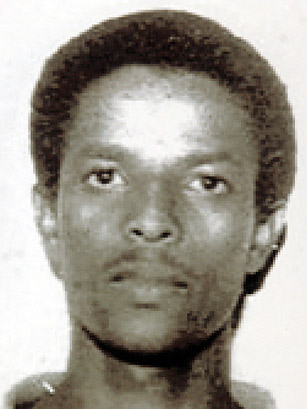
Harun Fazul, the senior al-Qaeda operative killed in Somalia last week, could have been captured at the start of his terror career fully 13 years ago. He had just overseen the crime that put the terrorist organization on the map: the Aug. 7 1998 bombing of the U.S. embassy in Nairobi that killed more than 200 people and injured thousands. At that time, he ranked high enough to give orders to the men who detonated the massive truck bomb he helped assemble, but not so senior that he could leave the city in advance of the blast with the elite al-Qaeda specialists. Fazul lingered leisurely in the east African country for a whole week.
In the ensuing investigation, Fazul would emerge as the “coordinator” of the Nairobi attack, pivoting between the al-Qaeda cell that had been in place in Kenya for years and the operatives who arrived specifically to carry out the bombing: an explosives specialist and the men who volunteered to die in the explosion. After the blast, he remained in Kenya until Aug. 14, when he caught a flight to his native Comoros, the strange and remote island chain in the Indian Ocean west of Madagascar. It would not be till Aug. 18 that the FBI raided the Nairobi hotel that had served as headquarters of the bombers and discovered that one of them had placed a telephone call to Comoros. The following day the U.S. ambassador to the islands called the Comoran minister of the interior and asked where 733342 rang. The answer arrived overnight: it was a private line to the home of the family of Harun Fazul.
The fugitive soon put himself on the next flight out of Comoros’ Prince Said Ibrahim International Airport. But the country is so remote that for days Fazul was essentially trapped on the island by flight schedules — there was only one plane a week. The FBI had its own plane but it would be eight days before agents arrived on Comoros. By then, Fazul was in the wind, having flown to Dubai three days after the telephone trace inquiry. From there, he was assumed to have continued on to Pakistan and Afghanistan, where Osama bin Laden was ensconced.
If the FBI had moved faster, would he have been caught?
“Instead of saying ‘would have,’ I would say ‘could have,’ because he was well-connected on the island,” says Harold W. Geisel, the U.S. ambassador at the time. “We missed him by a matter of days,” says Pat D’Amuro, who headed the FBI investigation into the embassy bombings, an effort that peaked at 500 agents. “We didn’t learn that he was in the Comoros immediately,” recalls D’Amuro, now chief executive officer of Giuliani Safety and Security. The phone record was only one of several pieces of information suggesting he might have made for Moroni, the Comoran capital. D’Amuro says when an FBI team arrived, on Sept. 1, they found a record of Fazul’s departure on the weekly Emirates flight. “It looked like he got his wife situated and he got out of there very quickly,” D’Amuro says.
However, there were suspicions, Geisel recalls, that Fazul did not flee into Pakistan and Afghanistan but remained hidden in Comoros. As ambassador, Geisel dispatched his francophone secretary and her husband, a former French paratrooper with experience in Comoros, to help the FBI on the former French colony. “I don’t think they were convinced he had left,” Geisel says of the investigators. “He may have gone to ground. Because if you think about it, Comoros is a pretty good place to go to ground.” Says Geisel, now the State department’s deputy inspector general, “He had connections and the Comorans were scared to death of him. They were terrified.”
“That place was a world unto itself,” says Geisel. “I had one guy in the government who I thought was honest. I wouldn’t put my life in his hands, but he was pro-American. And this guy was saying to me [whether Fazul was in Comoros or not]: ‘Who knows?'” He says, “It was always one gigantic question mark what was really going on there.”
Comoros has been famous variously for its now-derelict ylang-ylang plantations ; a massive dormant volcano; a prehistoric fish, the coelacanth, occasionally found in its waters; frequent coups; and the spectacular 1996 crash landing of a hijacked Ethiopian Airlines jet just off its only resort. The population is poor, relying overwhelmingly on remittances from relatives working abroad, but friendly. Radical Islam is far outside the country’s easy, moderate religious tradition, although the Saudis funded a fundamentalist madrassa that Fazul attended before setting off for Pakistan and Sudan as a youth.
In the years to come after the Nairobi bombing, Fazul would grow steadily in importance both to al-Qaeda and to his pursuers. When international sanctions threatened al-Qaeda’s cash flow after 9/11, he was instrumental in arranging a trade in “blood diamonds” through Liberian president Charles Taylor. In 2002, he masterminded a second major terror strike in Kenya, the bombing of a Mombasa resort popular with Jewish tourists, and missile attack on a departing El Al flight. In recent years he was reputed to be al-Qaeda’s main connection to the militant Islamist army in Somalia known as the Shabab. There was a $5 million reward on his head. The Combating Terrorism Center at West Point concluded an 11-page summary of his life and career by calling Fazul, also known as Fazul Abdullah Mohammad, “one of the most dangerous international terrorists” in the world.
At one point in 2007, the U.S. military dispatched an AC-130 Spectre gunship — a slow-moving, horrifyingly lethal aircraft equipped with Gatling guns — to pound a Somali village in hopes of hitting Fazul. It didn’t. He finally met his end last week in Mogadishu, dying after he stumbled upon an enemy checkpoint in the dark.
See pictures of a jihadist’s journey.
See TIME’s al-Qaeda covers.